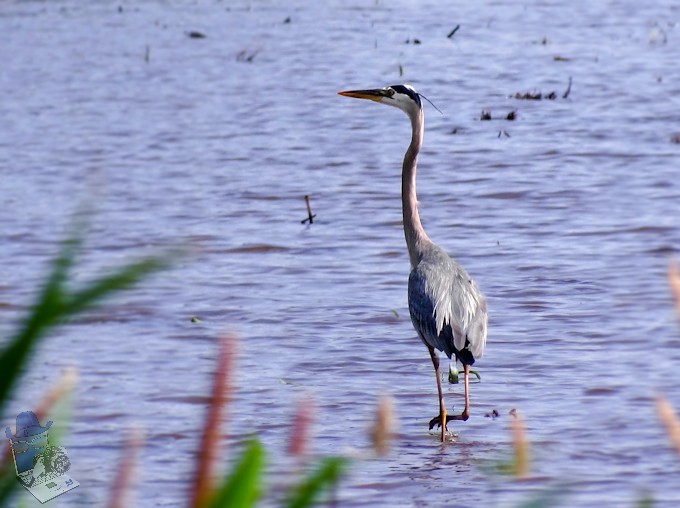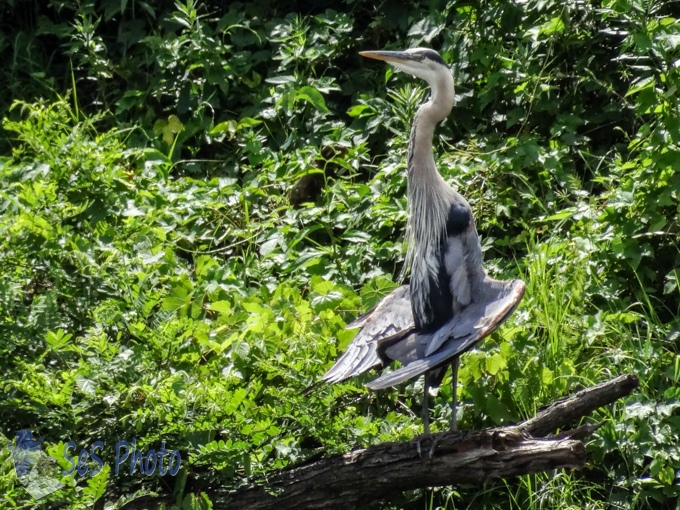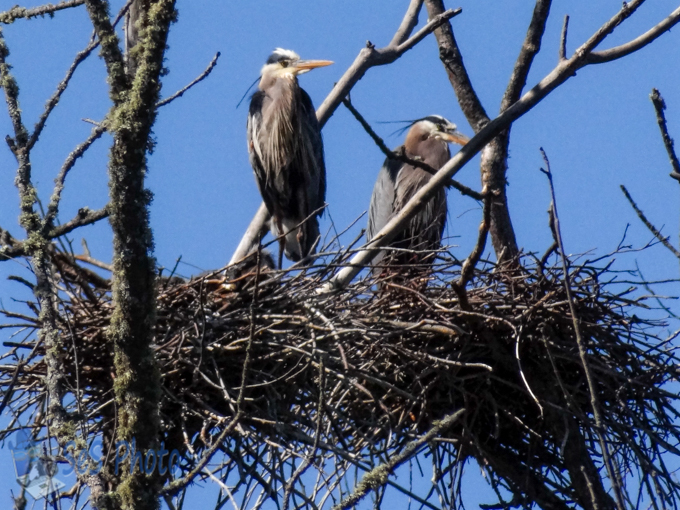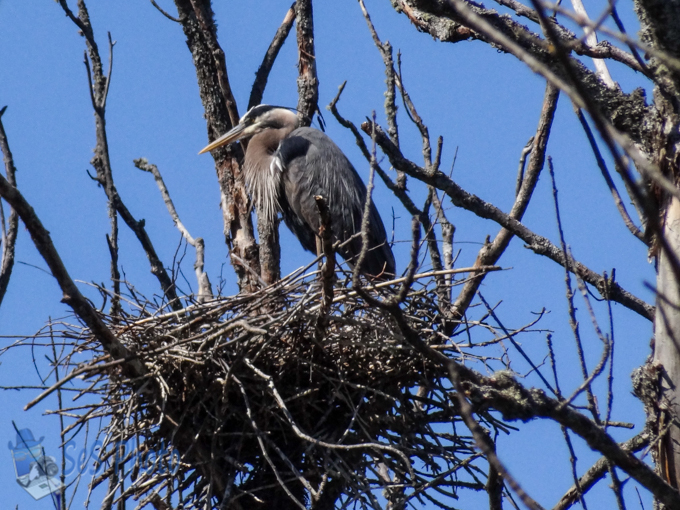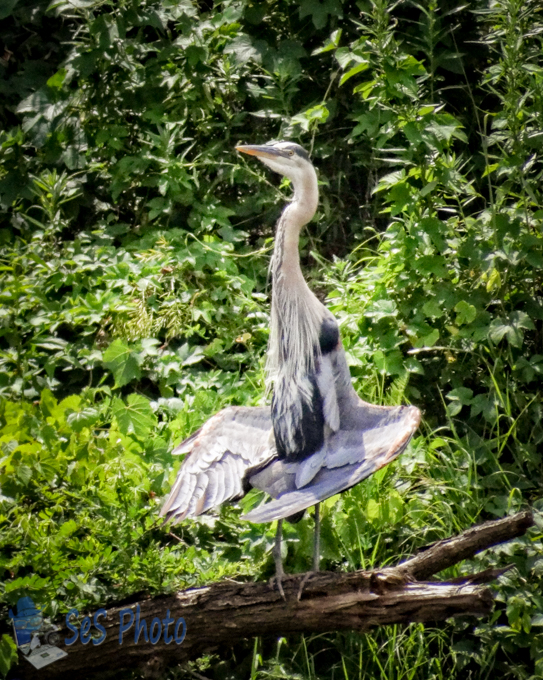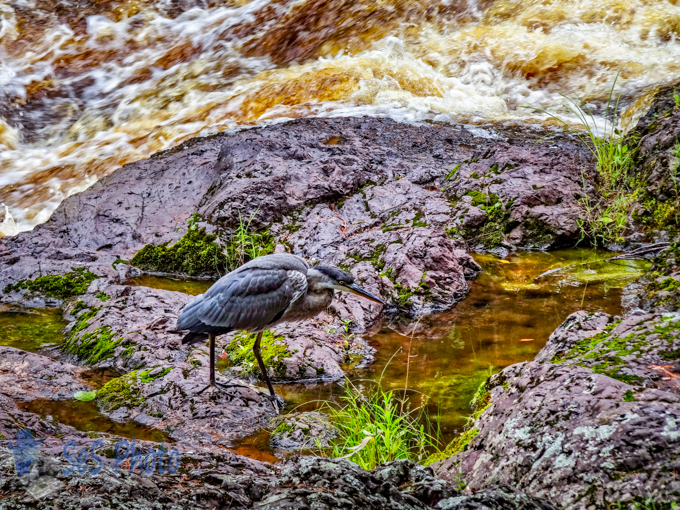My pond some times has a Green Heron as a frequent visitor and on occasion, the larger Great Blue Heron visits and leaves foot prints on the pond floor several feet away from the shore. Great blue herons are waders and expert fishers. Herons snare their aquatic prey by walking slowly, or standing still for long periods of time and waiting for fish to come within range of their long necks and blade-like bills. The deathblow is delivered with a quick thrust of the sharp bill, and the prey is swallowed whole. Though they are best known as fishers, mice constitute a large part of their diet, and they also eat insects and other small creatures.
Great Blue Herons’ size (3.2 to 4.5 feet) and wide wingspan (5.5 to 6.6 feet) make them a joy to see in flight. They can cruise at some 20 to 30 miles an hour as they curl their neck into an S shape for a more aerodynamic flight profile. Despite their impressive size, Great Blue Herons weigh only 5 to 6 pounds thanks in part to their hollow bones—a feature all birds share.
Great Blue Herons have specialized feathers on their chest that continually grow and fray. The herons comb this “powder down” with a fringed claw on their middle toes, using the down like a washcloth to remove fish slime and other oils from their feathers as they preen. Applying the powder to their underparts protects their feathers against the slime and oils of swamps.
Great Blue Heron
